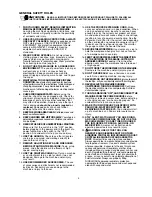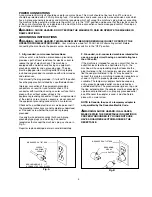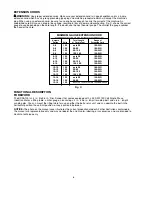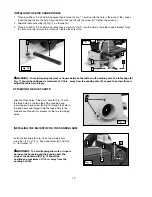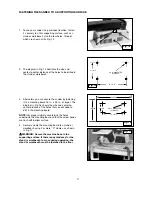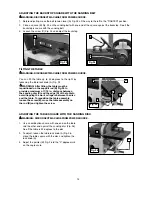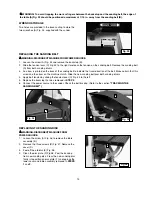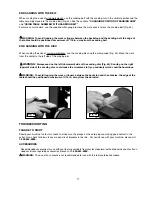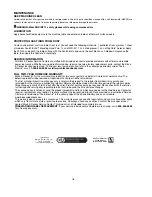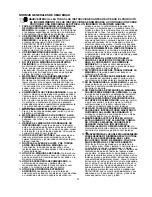
6
Fig. C
MINIMUM GAUGE EXTENSION CORD
RECOMMENDED SIZES FOR USE WITH STATIONARY ELECTRIC MACHINES
Ampere
Total Length
Gauge of
Rating
Volts
of Cord in Feet
Extension Cord
0-6
120
up to 25
18 AWG
0-6
120
25-50
16 AWG
0-6
120
50-100
16 AWG
0-6
120
100-150
14 AWG
6-10
120
up to 25
18 AWG
6-10
120
25-50
16 AWG
6-10
120
50-100
14 AWG
6-10
120
100-150
12 AWG
10-12
120
up to 25
16 AWG
10-12
120
25-50
16 AWG
10-12
120
50-100
14 AWG
10-12
120
100-150
12 AWG
12-16
120
up to 25
14 AWG
12-16
120
25-50
12 AWG
12-16
120
GREATER THAN 50 FEET NOT RECOMMENDED
FUNCTIONAL DESCRIPTION
FOREWORD
The BDSA100 is a 4 in. Belt, 6 in. Disc Sander that comes equipped with a 5.2 AMP 120 Volt Single Phase
Induction Motor, a tilting table, a miter gauge, a backstop, a 4 in. x 36 in. 60-grit sanding belt, and a 6 in. 60-grit
sanding disc. You can mount the tilting table for use on either the belt or disc unit, and can operate the belt in the
horizontal position, the vertical position, or any position in between.
NOTICE:
The photo on the manual cover illustrates the current production model. All other illustrations contained in
the manual are representative only and may not depict the actual color, labeling, or accessories, and are intended to
illustrate technique only.
EXTENSION CORDS
WARNING:
Use proper extension cords. Make sure your extension cord is in good condition and is a 3-wire
extension cord which has a 3-prong grounding type plug and matching receptacle which will accept the machine’s
plug. When using an extension cord, be sure to use one heavy enough to carry the current of the machine. An
undersized cord will cause a drop in line voltage, resulting in loss of power and overheating. Fig. C, shows the correct
gauge to use depending on the cord length. If in doubt, use the next heavier gauge. The smaller the gauge number,
the heavier the cord.



